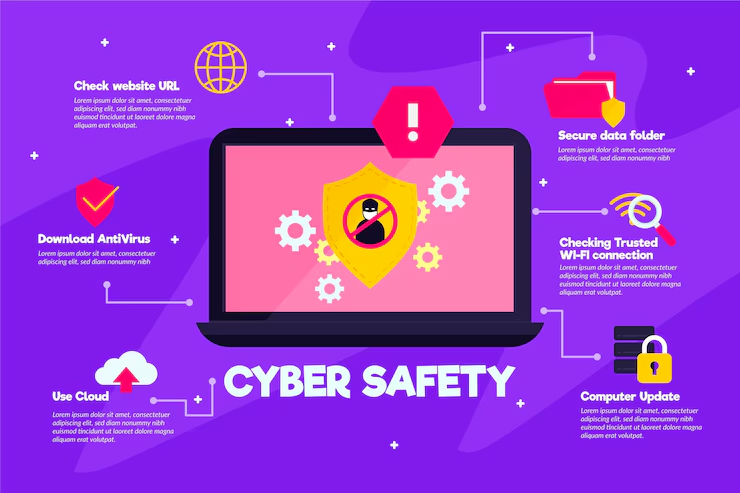Computer science
Cyber Security
In today's interconnected world, cybersecurity plays a pivotal role in safeguarding our digital infrastructure, personal information, and organizational assets from a myriad of cyber threats. As technology continues to advance, so do the methods and sophistication of cyber attackers, making cybersecurity more critical than ever before.
4.7 (253 user ratings)
★★★★★ 4.7/5
- 4.721 students
- Last updated 8/2022
Descriptions
This course provides an overview of the field of cybersecurity, covering the basic principles of securing information systems. It introduces concepts such as threats, vulnerabilities, risk management, cryptography, and the importance of security policies.

Course content
This course provides an overview of the field of cybersecurity, covering the basic principles of securing information systems. It introduces concepts such as threats, vulnerabilities, risk management, cryptography, and the importance of security policies.
Focuses on protecting network infrastructure and data as it travels across networks. Topics include firewall configuration, intrusion detection systems, virtual private networks (VPNs), and secure network design principles.
This course teaches how to identify and exploit vulnerabilities in systems and networks ethically. It covers penetration testing methodologies, tools, and techniques to assess the security of systems.
Explores the principles and practices of cryptography, including symmetric and asymmetric encryption, hashing, digital signatures, and key management. It emphasizes the application of cryptographic techniques to secure communications and data.
Focuses on the processes and techniques used in responding to cybersecurity incidents and investigating digital crimes. Topics include evidence collection, analysis, and legal considerations in digital forensics.
Covers the identification, assessment, and mitigation of cybersecurity risks. The course emphasizes developing and implementing risk management strategies, policies, and procedures to protect organizational assets.
Prepares students for roles in a SOC, focusing on monitoring, detecting, and responding to security threats. Topics include security information and event management (SIEM) systems, threat intelligence, and incident handling.
Teaches how to secure software applications by identifying and mitigating vulnerabilities during the development lifecycle. Topics include secure coding practices, application security testing, and common vulnerabilities such as SQL injection and cross-site scripting (XSS).
Focuses on securing cloud environments and services. It covers cloud security architecture, identity and access management, data protection, and regulatory compliance in the cloud.
Explores the development and implementation of cybersecurity policies, standards, and governance frameworks. It covers legal and regulatory requirements, industry standards, and best practices for managing cybersecurity in organizations.
₹ 5000/-
- 2 projects-minor and majors
- LMS access 24/7
- Q&A sessions
- Reports and Analysis
- Tests and Assignments
- 25+ Live recorded sessions
- 25+ Live recorded sessions
- Course Completion Certificate
- Internship Training Certificate
- Letter of Recommendation
- 3 Live Industrial Expert sessions
- Placement Training
share it :
Start your learning journey today! Enroll now in our online course.
Lorem ipsum dolor sit amet, consectetur adipiscing elit. Ut elit tellus, luctus nec ullamcorper mattis, pulvinar dapibus leo.
What they say about us
Robotics course was an excellent introduction to the field, with engaging hands-on projects and knowledgeable Instructors

I enrolled in the Genetic Engineering course, the theory part was no doubt amazing, out the WetLab experience was awesome!

I recently completed the Al program with Vaidhik , and my experience was highly positive. The content was comprehensive, covering essential Al concepts seamlessly. The availability of resources and support contributed significantly to my success. Overall. I highly recommend Vaidhik Al program for anyone looking to delve into this field.

The online training program from vaidhik EduTech exceeded my expectations. The comprehensive curriculum covered everything from basics to advanced topics, and the interactive virtual labs provided a real-world simulation.

This was a great experience to do such an internship with vaidhik EduTech. Like at the beginning of the course I was not at all aware of Al, ML . But after completion of this course, I was filled with a bounty of knowledge. specifically, if I say about the class conductance and the way so it was awesome like to study online with such highly qualified teachers was an amazing experience, and classes were scheduled in time .


